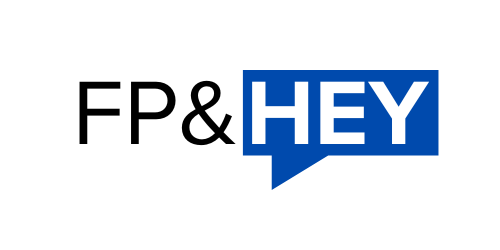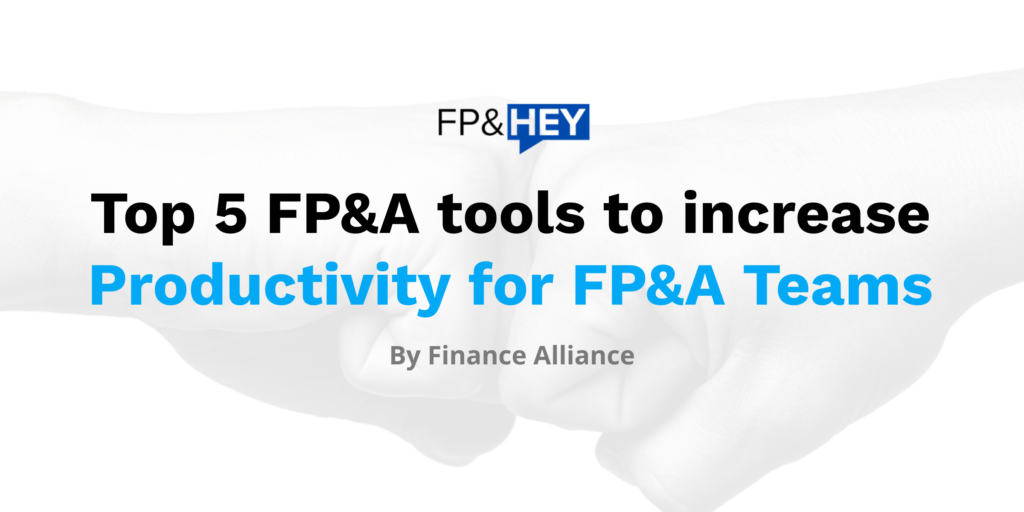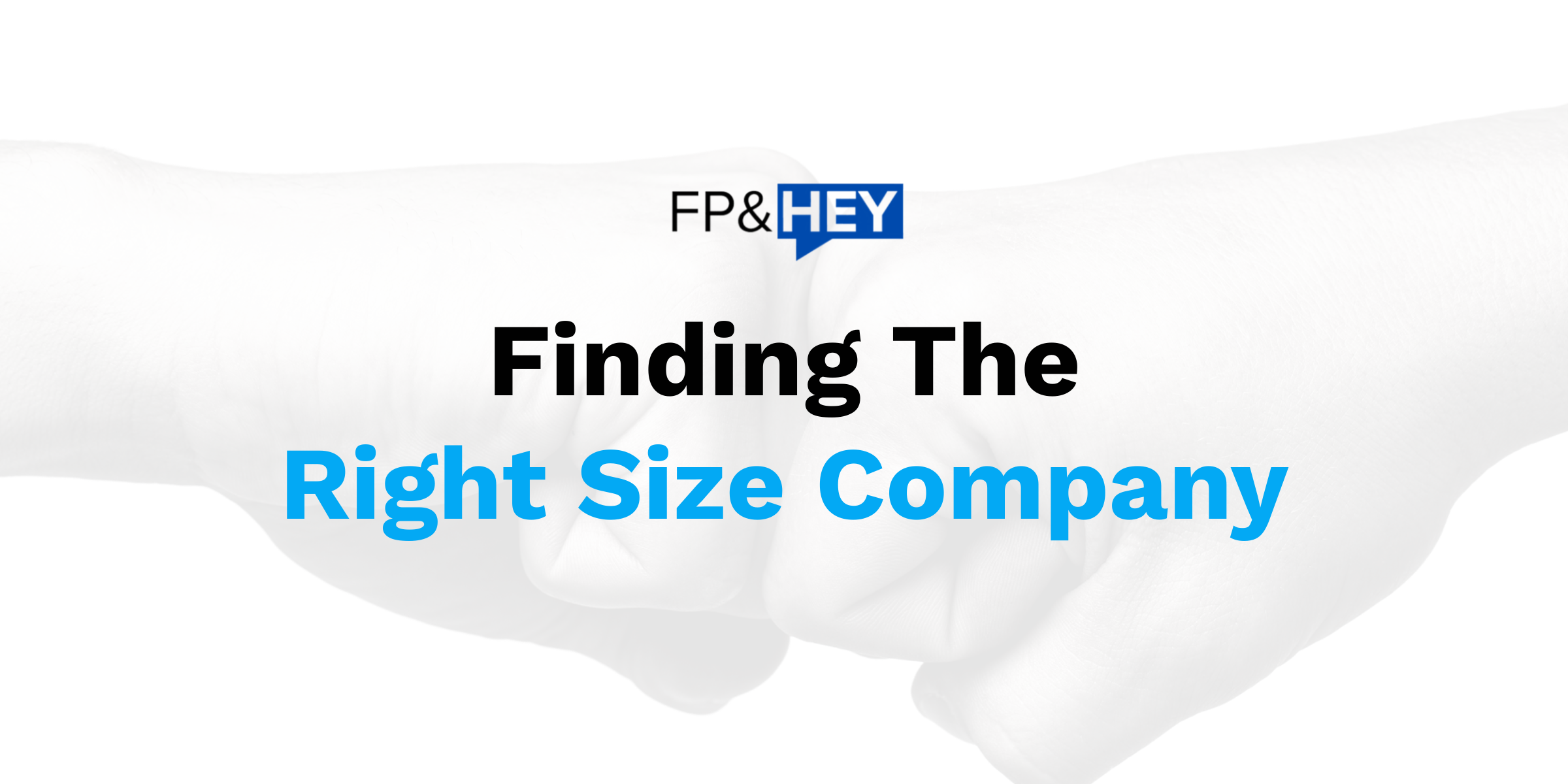This blog was guest-written by Finance Alliance, where finance leaders join forces and inspire career growth. Shoutout to their wonderful team in collaborating with us!
Financial planning and analysis (FP&A) plays an instrumental role in supporting a company’s decision-making processes and overall financial health.
But in order to meet the demands of modern finance and ensure businesses continue to prosper, FP&A teams need the best tools for the job.
In this article, we’ll outline the key features to look for in an effective FP&A tool, and the top five FP&A tools to increase productivity for FP&A teams, as voted for by industry experts.
Key features to look for in FP&A tools
There are a countless number of FP&A tools out there in the market, all designed to help streamline and enhance your existing processes.
But how do you narrow down the best of the best?
Well, here are the key features we think you should keep top of mind:
User-friendliness
A user-friendly interface is vital for FP&A professionals to input and analyze data efficiently, and avoid wasting time trying to navigate complicated menus and functions. The goal of an FP&A tool is to optimize, streamline, and elevate financial processes, not make them more complex and time-consuming.
Integration capabilities
A top-class FP&A tool has the ability to integrate data from multiple sources, meaning that it can provide a more holistic view of an organization’s performance and financial planning can better align with company objectives.
With this feature, the tool can pull in data that can assist in the modelling and projecting of financials. Integration also allows for real or near real-time data transfer to provide finance professionals with the most current data, resulting in faster decision-making and increased accuracy.
Data visualization and reporting
It’s vital that you’re able to communicate complex financial information in a clear, digestible way to your key stakeholders. FP&A tools that provide reporting options like charts, graphs, dashboards, and tables means that financial data is easier to interpret for non-finance pros, and finance teams can save valuable time that’s usually spent preparing this information.
Budgeting and forecasting
Budgeting and forecasting capabilities help FP&A teams develop accurate financial models and budgets and allow them to adapt quickly to any unexpected challenges or changes.
Choose an FP&A tool that supports people and scenario planning, manages cash flow operations and complex calculations, and provides real-time updates on budget performance.
The most advanced tools also use artificial intelligence and machine learning to enhance the accuracy of forecasts, allowing finance professionals to quickly pivot when required.
Collaboration and sharing
The best FP&A tools enable you to share insights across teams and align all departments of an organization.
To avoid delays for the finance team and keep everyone in the know, it’s a good idea to invest in a platform with a built-in chat or comment feature which allows for discussions about specific data findings and analysis. The FP&A team will also be able to ask any questions and resolve issues quickly and efficiently, all from one platform.
Security and compliance
Financial information is incredibly sensitive, which makes security and compliance a vital aspect of any FP&A tool you choose.
Opt for a tool that offers features like advanced data protection, encryption, and access controls. Compliance with the relevant industry regulations should also be an essential part of an FP&A tool, as well as the ability to enable multi-factor authentication so only certain individuals have access to confidential information.
Top 5 tools for FP&A teams
In our Finance Tools of Choice Report 2023, we gathered insights from industry leaders to spotlight the tools that finance professionals can’t do without. Here are some of their top choices:
1. Microsoft Excel
Microsoft Excel remains a staple software tool for finance professionals. Its grid-based layout and variety of formula options make it ideal for carrying out tasks that range from basic data entry to complex financial modeling.
Excel is available across multiple platforms and is compatible with a range of third-party plugins, making it a highly versatile tool with multifaceted functionalities.
Key features:
- Conditional formatting – Excel allows you to format cells based on conditions you set.
- Macros – automate almost anything with Visual Basic for Applications (VBA).
- Pivot tables – you can present datasets as tables that can be adjusted based on different variables and get multiple views in one single table.
- Lookup functions – used to search through a single column/row in order to find a certain value from the same place in a second column/row.
- Charts, graphs, and other visuals – present complex financial information in a clear and concise way for key decision makers and stakeholders.
- What-if tables – these allow you to ask specific questions about your data.
Pricing:
For Business
| Microsoft 365 Business Basic | Microsoft 365 Business Standard | Microsoft 365 Business Premium | Microsoft 365 Apps for Business |
| $6.00 user/month | $12.50 user/month | $22.00 user/month | $8.25 user/month |
For Home
| Microsoft 365 Family | Microsoft 365 Personal |
| $99.99/year or $9.99/month | $69.99/year or $6.99/month |
Pros and cons:
Pros
- Accessible, widely used tool that caters to the needs of small to large organizations.
- Easy to master, even for beginners.
- Built-in features and formulas that can help with developing and updating forecasts.
- It’s easy to collaborate on projects, as multiple users are able to edit the same spreadsheets.
Cons
- Limitations of Excel include: automating data ingestion, driving collaboration with different stakeholders in the budgeting process, using multi-dimension modeling to build bottom-up and top-down forecasts and budgets.
- Excel also has limitations in regard to scalability and security, which can impact the performance and quality of forecasts.
- Can become slower when handling large files or hosting multiple users.
- Can be prone to human errors which can increase the likelihood of mistakes and affect the accuracy and reliability of forecasts.
2. Power BI
Power BI is Microsoft’s premier data visualization tool. Its purpose is to transform raw data into meaningful insights, and it also enables real-time dashboard updates, which makes it ideal for tracking KPIs, evaluating risk, and monitoring fiscal performance.
Power BI also allows for deep integration with other Microsoft products, such as Microsoft Excel, which means that users can transition seamlessly and utilize familiar features.
Key features:
- Visualization and reporting – Power BI has a number of pre-built visualizations, with the option to customize existing ones or choose from a continuously expanding library of in-built ones.
- Real-time data analytics – Power BI dashboards are able to update in real-time, which speeds up decision-making and problem-solving.
- Quick Insights – by utilizing powerful algorithms, Quick Insights provides better and faster access to analytics results.
- Power Pivot – this data modeling method allows you to easily develop data models, relationships, and calculations.
- Power Q&A – this feature allows users to ask natural language questions and receive answers in the form of a visual.
Pricing
| Power BI Pro | Power BI Premium | Power BI Premium (per capacity) |
| $9.99 per user/month | $20.00 per user/month | From $4,995 per capacity/month |
Pros and cons
Pros:
- Offers a wide range of custom visualizations that can be converted to charts, graphs, KPIs, etc.
- Provides great data accessibility – you can access your data anytime from anywhere.
- Supports a variety of data connectors for importing data from multiple sources, such as Excel, SQL Server, and Oracle, among many others.
- Sends automatic, custom alerts about changes to important KPIs and metrics.
- Allows easy sharing of reports that are separate from their original data.
Cons:
- Has a limit on the size of the data it can consume, and may take longer to process data and produce reports than other tools.
- Struggles to handle data with complex relationships between tables. You need to create data models with unique fields.
- Though it offers a large amount of visualizations, it only offers a few customization options.
- Possesses limited data modeling capabilities.
3. Causal
Causal is an advanced business planning platform that allows financial experts to craft models, pull data from accounting and CRM systems, and collaboratively engage with interactive dashboards.
Causal is renowned for its intuitive interface, real-time collaboration, and robust data integration capabilities.
Key features:
- Model dynamically without the need for working in traditional spreadsheets.
- Human-readable formulas to develop and update models 5x faster than Microsoft Excel.
- Share interactive dashboards across the organization.
- Run multiple scenarios to compare different revenue plans.
Pricing
| Free | Launch | Growth |
| $0(Ideal for personal use) | $250/month(Ideal for teams of 10-50 people) | Book a demo and/or get in touch for pricing(Ideal for 50+ people teams) |
Pros and cons:
Pros
- With Causal, you can structure models with inputs, variables, and outputs in their own sections.
- It’s quick and easy to learn how to use the software.
- Time series formulas are useful in dealing with financial data and projections.
- Ability to create and save multiple scenarios.
- Robust catalog of data connectors so you can connect your model to live data.
Cons
- Has a limited collection of visualizations.
- No designated feature to extract and transform data.
- Lack of flexibility compared to Excel.
- More on the expensive side compared to other FP&A tools.
4. Python
Python is a highly popular programming language that has become an invaluable tool for financial analysis. It can effectively streamline reporting and has an extensive library ecosystem that supports tasks such as data gathering, statistical modeling, and risk assessment.
Python is incredibly flexible, which makes it ideal for one-off analyses and automated financial systems.
Key features:
- Data analysis libraries for finance tasks, which include:
- NumPy: arrays and matrix operations for statistical modelling and analysis.
- Pandas: provides data structures and tools for preparing and manipulating data.
- Matplotlib: uncovers insights by creating publication-quality visualizations.
- SciPy: used to solve complex scientific and mathematical problems.
- statsmodels: provides classes and functions to estimate different statistical models, conduct statistical tests, and data exploration, and is ideal for time series modelling and forecasting.
- Automation through Python scripting to eliminate repetitive tasks
- Visualization and charting for data insights
Pricing:
You can download Python and its frameworks and libraries for free.
Pros and cons:
Pros
- User-friendly syntax which makes it easy to learn.
- Extensive range of libraries which are free to use.
- Python code doesn’t need to be compiled before it’s run.
- Can be run in different locations without having to make changes to your code.
Cons
- Python is executed line by line, which means it can run slower than other solutions.
- Uses up a lot of memory.
- Runtime errors – Python is a dynamically typed language so the data type of a variable can change at any point.
- Not optimized for database access.
5. Tableau
Tableau is a leading tool when it comes to advanced data visualization and analytics in finance. With Tableau, you can create detailed, interactive dashboards that present data in an intuitive manner.
Tableau can also integrate with various data sources to ensure all financial data can be seamlessly imported, analyzed, and presented, making it an invaluable solution for FP&A professionals who want extract deep data insights.
Key features
- Automated data update services to make financial reporting more efficient.
- Interactive data breakdowns, graphical representations, and dashboards.
- Financial reporting services to automate and optimize P&L reports, balance sheets, and cash flow statements.
- Data blending and data drill-down features to help highlight relevant data and identify variations and trends with organizations.
Pricing
| Tableau Creator | Tableau Explorer | Tableau Viewer |
| $70 user/month | billed annually | $42 user/month | billed annually | $15 user/month | billed annually |
Pros and cons:
Pros
- Quick and easy to create interactive visualizations with the tool’s drag-and-drop functions.
- Visually appealing interface which makes it easy to use.
- Can handle large amounts of data without this impacting the performance of dashboards.
Cons
- No option for custom visual imports.
- Static parameters that need to be be updated manually every time data is changed.
- Doesn’t provide centralized data-level security which increases the chances of the system being hacked.
Conclusion
FP&A is at the heart of a company’s strategic success, which is why equipping your team with the most effective tool is so critical.
Ultimately, the right tool will depend on the specific needs of the organization, but one thing’s for sure – investing in a reliable, high-performance FP&A solution is guaranteed way to drive growth and ensure you maintain a competitive edge.
To help you make a more informed choice, why not check out Finance Alliance’s Tools of Choice Report 2023? Inside, you’ll find the ultimate directory of leading finance tools, as vetted and tested by industry pros.



